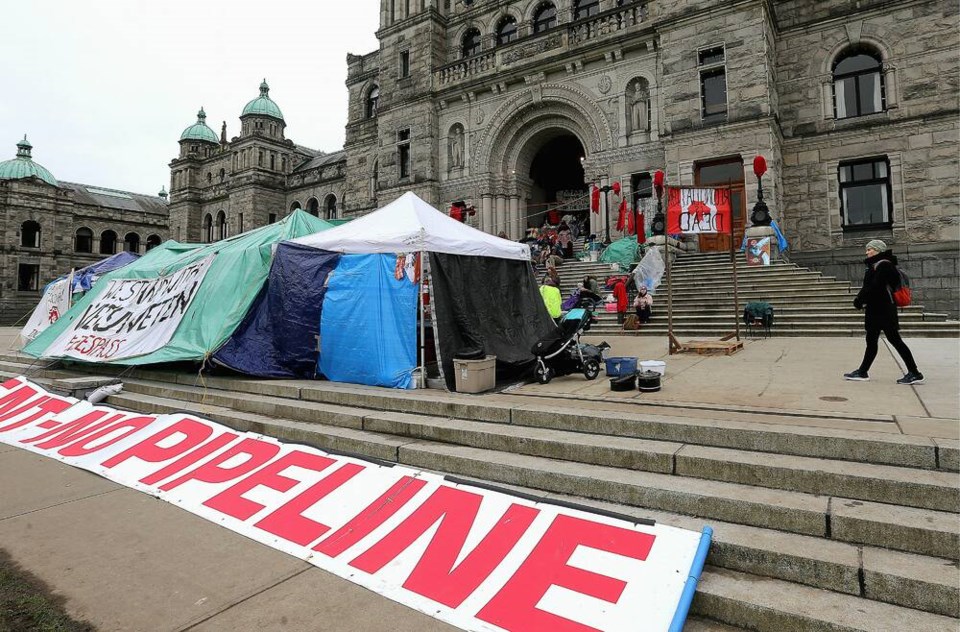A commentary by the climate campaigner at the Wilderness Committee.
Premier John Horgan loves to tout his NDP government’s climate plan as “continent-leading” and “the best in North America.” But after he announced an update of his CleanBC plan last week, leaving the door open for more fracking and new liquefied natural gas plants, it’s clear British Columbia is one of the few places still pushing for more fossil fuels.
Despite several new reports from the International Energy Agency and UN Environment Project showing the world must move faster to produce and consume less coal, oil and gas, the province’s climate plan commits to “set a policy framework” for “reducing emissions from oil and gas.” It shows the government still can’t back up its longstanding claims LNG fits within its targets.
Considering there’s one LNG terminal under construction, another that already has its permits and three more starting the environmental assessment process, that’s a problem. CleanBC’s modelling includes the first phase of LNG Canada in Kitimat, but the whole plan would fall apart if Shell and its partners decide to finish the $40-billion facility they’ve started.
Nothing in CleanBC prevents that. What it has is a target for oil and gas companies to reduce emissions by 33 to 38 per cent. There’s no plan for them to get there. There are no consequences if they don’t. Instead, it gives the province another two years to determine what new policies they actually need. And you can bet gas-industry lobbyists will be involved.
Compare this to Quebec, where Premier François Legault recently announced a ban on oil and gas extraction. This is not an empty gesture. Quebec has gas reserves just like B.C. in the Gaspé Peninsula and the potential for offshore oil in the Gulf of St. Lawrence. But due to the urgent need to end the use of fossil fuels, the province is leaving them in the ground.
Quebec also rejected an LNG project similar to LNG Canada because of the carbon pollution it would have created. The province’s Bureau d’audiences publiques sur l’environnement (BAPE) dispelled any notion LNG could have a role in lowering global greenhouse gas emissions and, in fact, said it would delay the transition to a low-carbon economy in its target markets.
Even places with well-established oil and gas industries are getting the message. California Gov. Gavin Newsom signed an order to stop issuing new fracking permits in 2024. He also called on the state regulator to develop a plan to end all oil production by 2045. These are the policies Horgan needs to implement if he wants to be a continental climate leader.
Instead, B.C. is building itself a brand new LNG industry that will require tens of thousands of new fracking wells. Rather than limit drilling in the northeast, the CleanBC plan seems to be designed to provide cover for it. Yes, eliminating methane emissions and setting a climate target for the sector are admirable goals, but without a plan to get there and alongside a massive expansion of the industry, it’s simply greenwashing.
Earlier this year, the Methane Emissions Research Collaborative between government and industry found that leaks of the extremely potent greenhouse gas were twice as high as previously reported.
That alone erases any potential benefit of switching from other fossil fuels to gas, despite Horgan’s claims otherwise in his CleanBC announcement. Rather than providing cover for LNG, our focus now has to be how to phase out fracking for gas and support the workers and communities who rely on it.
Horgan still has a chance to follow the leadership of other jurisdictions. His government is reviewing the royalties fracking companies pay to access the province’s gas.
He appears ready to eliminate the absurd system that allows 14 out of 15 of the biggest fracking companies to receive more in drilling credits than they pay in taxes and royalties. But if he simply sets the rates at fire-sale prices, it will only spur more gas development, not less. B.C. should set these prices high enough to discourage Shell and its partners from LNG.
Three more LNG terminals have filed with the B.C. Environmental Assessment Office for review. Tilbury LNG on the Fraser River in Delta, the expansion of an existing FortisBC storage facility to allow for refuelling and exports, is the furthest along.
It could have a carbon footprint the size of Vancouver. B.C.’s new regulatory process offers the minister an opportunity to terminate proposals that are clearly out of line with the province’s goals.
If the B.C. NDP government is serious about combating the climate emergency, it should reject Tilbury LNG and show that fracked gas has no role in a clean B.C.



